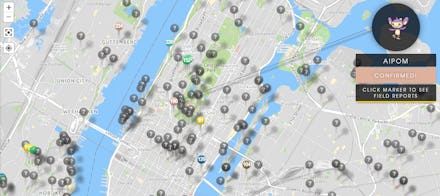'Pokémon Go' Nest migration 14: Gen 2 update means big spawn location changes

Overnight, Pokémon Go added over 80 new Gen 2 Pokémon in a huge new update, meaning tons of potential new nests. Right on schedule, nest migration 14 has arrived, sending Pokémon Go mappers scrambling to see where these new Pokémon are spawning.
Will Gen 2 Pokémon overrun old nests? Will Gen 1 spawns be choked out? Here's what we know so far about the first nest migration of Pokémon Go Gen 2.
Pokémon Go Nest Migration 14: What's a nest migration anyway?
Pokémon nests, or areas where a particular species of Pokémon will reliably spawn, rotate every two weeks or so. Old nests are deleted, and new nests spawn across the game map. The Global Nest Atlas, which allows users to report nest sightings and confirm others' sightings, therefore needs to be updated every time there's a nest migration.
The 14th Nest Migration, the first Pokémon Go nest migration after the introduction of the new Gen 2 Johto Pokemon, is going to be a doozy to track. It will also provide extremely valuable information on how the new update is changing the entire game.
Pokémon Go Nest Migration 14: Global Nest Atlas adds Gen 2 Pokémon
The Global Nest Atlas is developed by Silph Research Group, the collective name for all the Pokémon Go fans from The Silph Road community who collaborate on projects like the Global Nest Atlas.
Every major research tool used by the Pokémon Go community has to be updated with the new data represented by over 80 entirely new species of Pokémon. Silph Research group is on it. The Global Nest Atlas now allows users to report and confirm reports of Gen 2 Pokémon nests, along with all the other Pokémon species that the Atlas was previously capable of tracking.
Think about what that means for UI options alone, having to add 80 more boxes to check and 80 more names to scroll through. By the time Pokémon Go hits Gen 4, developers of Pokémon Go fan tools may have to begin making even heftier upgrades to make it easier for users to sift through results.
Pokémon Go Global Nest Atlas mappers will sift through the chaos of the Gen 2 Johto release
Pokémon Go experts know what Pokémon nests are and how to identify them, but no one is 100% sure how Pokémon nests work at the mechanical level. The specific factors that determine where a nest spawns or how Pokémon Go decides what kind of nest is going to be generated are still a mystery.
If the number of potential nest spawn locations is unchanging and Pokémon Go just shuffles through all available Pokémon, assigning one species to a nest location during each nest migration, then the introduction of over 80 new species should radically change the nest dynamic. After all, there will only be so much room for all these new Pokémon to work their way into nest locations.
If Pokémon Go expands the number of potential nest spawns, however, one can easily imagine the Global Nest Atlas becoming unwieldy. Again, Silph Research Group could find itself having to develop new sifting tools to make it easier for Atlas users to find and report results precisely.
More Pokémon Go guides, tips, tricks and updates
Check out Mic's guides on how to get stardust, how to determine how long it will take you to reach level 40, the kind of Pokémon you get from 10km eggs, how to create new PokéStops, how to maximize your chances of catching Pokémon and how PokéStops distribute Pokémon eggs. Also check out how to catch Gen 2 baby Pokémon, our analysis of post-balance update Chansey and Rhydon and everything you need to know about finding the long-awaited Pokémon Ditto.